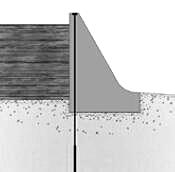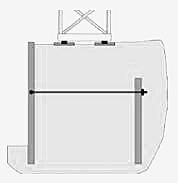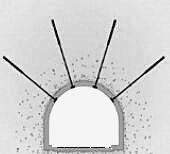
The anchor ensures that the ground remains stable and allows for deep, wide excavations. It is often temporary, because the long-term stability of the ground is maintained by the structure built in the excavation (car parks, basements, etc.)

Installing anchors at an angle prevents landslides and improves
ground resistance.

Vertical anchors are generally prestressed and improve dams' rollover resistance, while reducing water seepage along the line of contact with the rock.

Port tie rods keep a quay wall stable by transferring the forces to a rear sheet pile wall. This principle is also used for backfill held in place by prefabricated walls (access ramps, etc.)

Anchoring techniques strengthen retention of the galleries by balancing the forces of the ground. This type of application is found in mines and tunnels.

Vertical anchors provide an effective link between the foundation and the ground, while curbing the effects of fatigue when prestressed. Anchors can be used for towers, radio masts, wind turbines, etc.

Anchors enable structures to be built on land with a low bearing capacity or unstable land. The vertical loads of the structure are transmitted to the deeper, stable areas.

Corrosion-resistant anchors are used to hold structures in place that are subject to significant water uplift pressure and therefore enable structures to be built in wet areas by compensating for the principle of Archimedes.